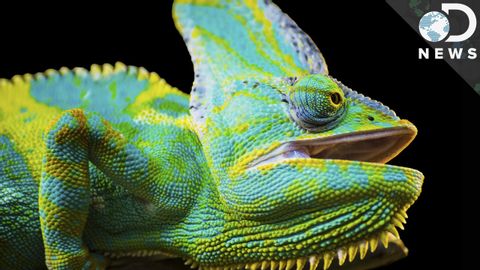カメレオンはどうやって色を変えるのか? (How Do Chameleons Change Colors?)
Jack が 2021 年 01 月 14 日 に投稿  この条件に一致する単語はありません
この条件に一致する単語はありません- v.t.(意見に)変化 : 影響を与える;色をつける : 彩色する
- n. (c./u.)色;顔色;肌の色
- v.t.着替える;両替する;取り替える;変える : 変わる;乗り換える
- n. (c./u.)着替えの服一式;小銭;おつり;変化 : 変更
- v.t.火をつける;点灯する : (照明を)つける
- adj.明るい;薄い;軽い;軽い
- n. (c./u.)光;明瞭化;光;照明;信号;表情
- adv.(旅行をするときに)荷物を少なくして
エネルギーを使用
すべての単語を解除
発音・解説・フィルター機能を解除
